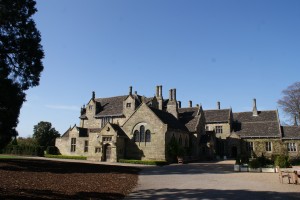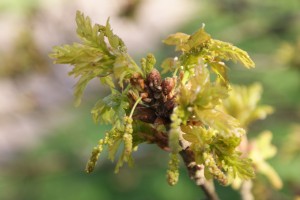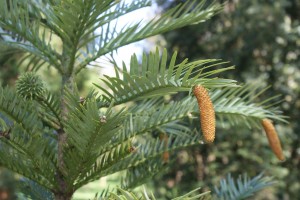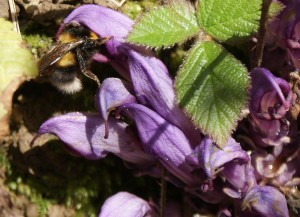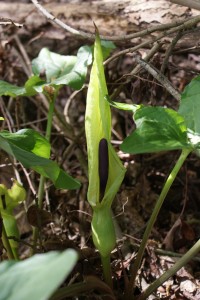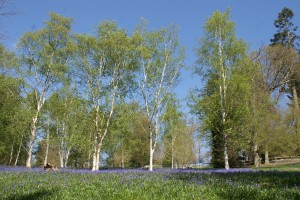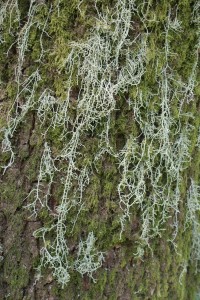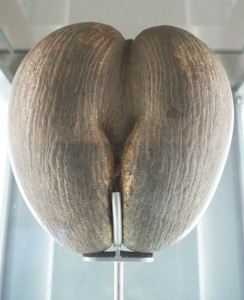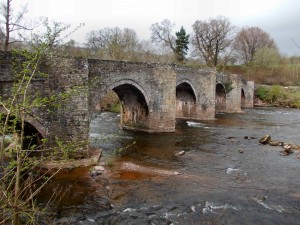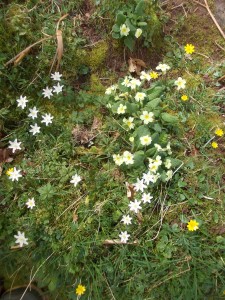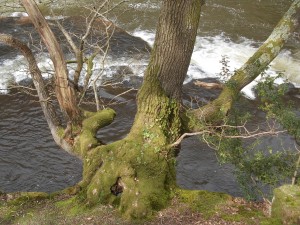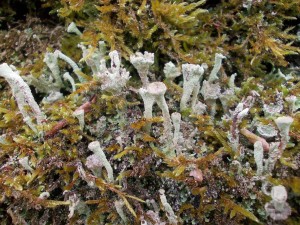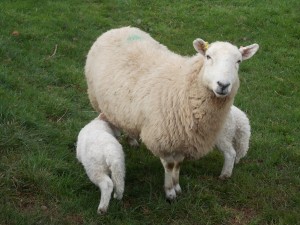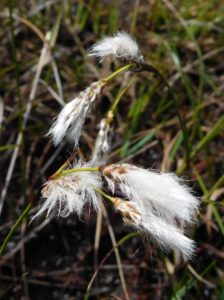
A bright, breezy, and much cooler day (16 C, not 29 any more) was just perfect for a visit to Thursley. Perhaps many of the dragonflies decided not to fly: I saw one Common Darter and (I think) one Brown Hawker, and nothing else, so anyone who went along hoping to see the Hobbies hawking for dragonflies by the dozen will have had a wasted trip (and indeed I saw several extravagantly camouflaged types with gigantic telescopes standing about looking very bored).
But everything else was in full swing. A Cuckoo called from the pinewoods. A Curlew gave its marvellously wild, bubbling call from the open marsh. A Dartford Warbler gave me the best view ever of its rufous belly and long tail, as it sat low in a scrubby Birch, giving its rasping anxiety call repeatedly. I enjoyed the view through binoculars. By the time I remembered to take a photo it was half-hidden again.
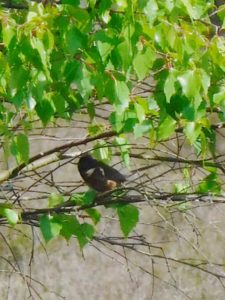
A Stonechat gave its scratchy call from a small Birch, then hopped up to some Pine trees (so, a distant shot).
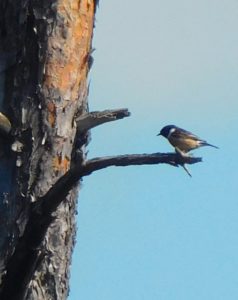
A few Chiffchaffs called from the woods; plenty of Whitethroats sang from the regenerating Birches that are encroaching on to the heath. A Green Woodpecker gave its fine laughing call.
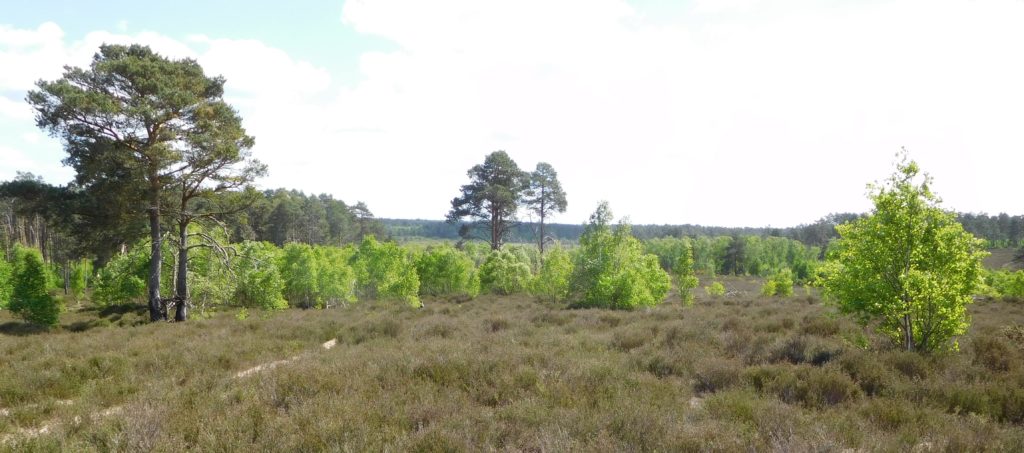
So I heard three warblers today to add to the four yesterday, so seven singing warblers in 24 hours, a little bit special.
The lichen flora on the heath was quite beautiful, with Usnea beard lichen, leafy Parmelia, bristly Ramalina (all on old Heather), and elegant Cladonia potscourer, cup, and stalk lichens (three species).
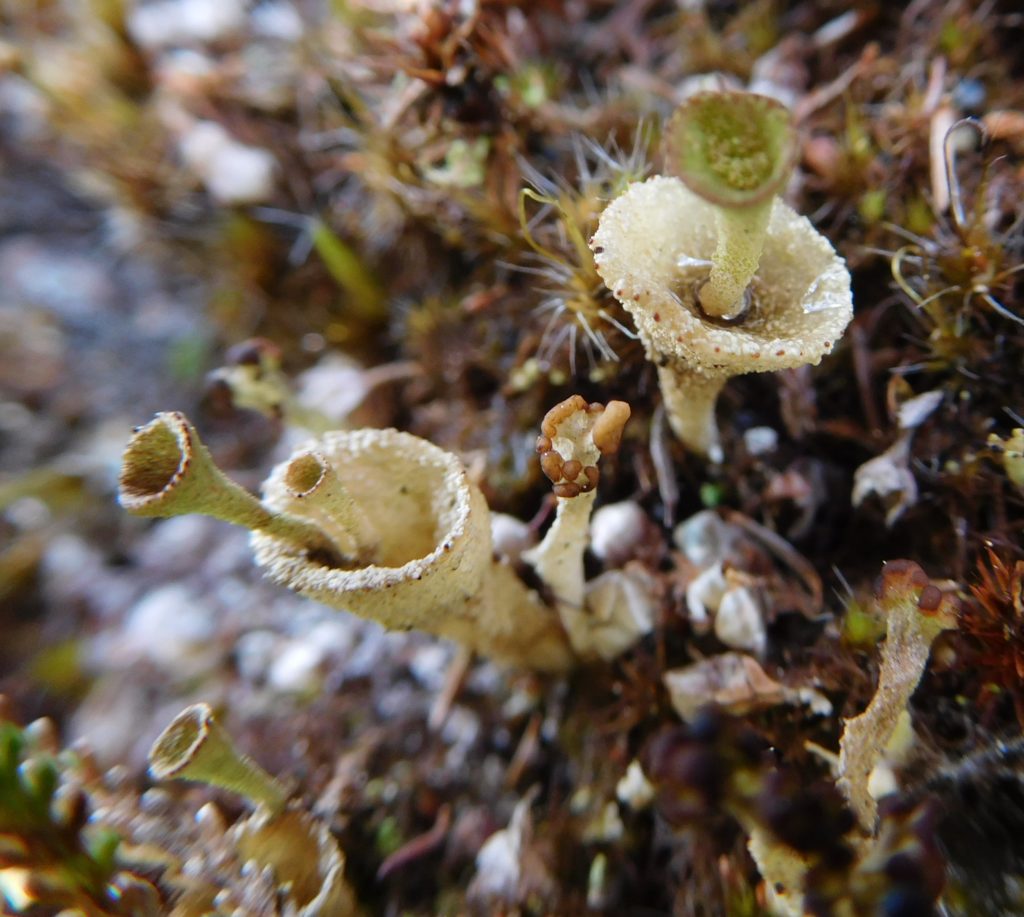
A Linnet sang from the top of a Birch. Goldfinches twittered and flitted about.
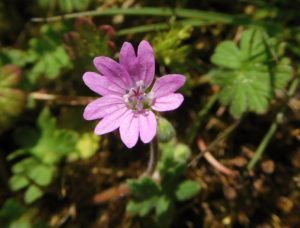
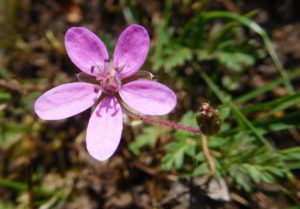
And on the path out, a Hobby leapt from a tree right in front of me, where it had been sitting watching the bog pools, waiting for dragonflies to come out and display themselves. It flew round and up, then circled, soaring, away to the south. Perhaps it was the one the twitchers had been waiting to see flying all morning.

